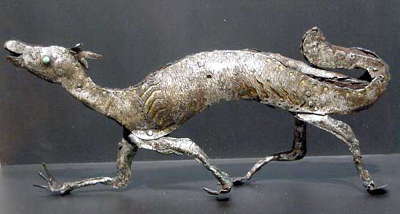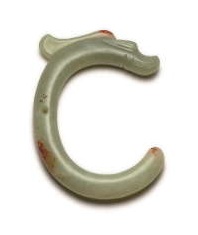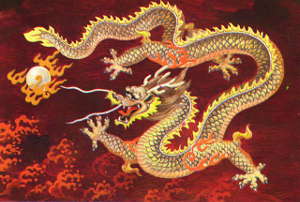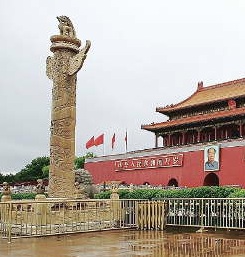|
|
| |
| |
back
to Lucky Dragon main |
 |
Lucky Dragon
|
This mythical
and mystic creature is often referred to as Chinese Dragon and while
it has most surely originated in Chinese culture and is considered
a symbol for Chinese culture, it is too limited to assign it to
China as a nation, as it is an important part of the tradition of
many other Asian nations. For example it is still the national symbol
of Bhutan and Vietnam. A more neutral name for the Chinese Dragon
is Loong 龙, based on the Chinese name, but as this is a term little
known outside of Asia, the Stahlhart model calls it a Lucky Dragon,
which summarizes its meaning rather than its origin.
While the Loong bears a certain resemblance to reptiles and hence
to Dragons from European tradition, it is a totally different creature
altogether. Dragons in the European tradition are usually treacherous
and malevolent creatures with heavy bodies, which need bat-like
wings to fly and breathe fire.

|
 |
 |
Bronze Loong toy
from classic China (Han dynasty?)
 |
|
The earliest depiction
considered to be a Loong dates back to sometime between 4700 and
2920 BCE, a C-shaped jade ring, with a head and mane. More detailed
depictions pretty much resembling the common ones that have emerged
since then go back as early as the first Chinese dynasties, around
1600 BC.
At least since the Han dynasty (206 BCE to 220 CE), the Chinese
 |
 |
 |
Loong-shaped jade
pendant from the pre-Chinese Longshan culture
 |
|
| |
Dragon was a symbol for the Emperor of China,
and therefore the Chinese state. The throne of the Emperor was
referred to as the Dragon Throne and only the Emperor was allowed
to wear clothing with depictions of a specific type of yellow
dragon. The Dragon totem, which is a free-standing column with
ornaments that identify it as a Chinese dragon, became a symbol
of the power of the state and is still commonly used as such
in modern China.

|

|
|
|
In the Chinese Zodiac, the
Dragon is the fifth animal. People born in the year of the dragon
are considered to be the most vital and powerful, ambitious and good
at dominating others. They are courageous and intelligent, not afraid
to face challenges or taking risks to achieve their goals.
One of the most inspiring adaptations of the Loong in Western literature
are the Luckdragons in Michael Ende's classic children's novel "The
never-ending story", who are gentle and intelligent creatures
that largely resemble the classic depiction of Loongs. In the story
the luckdragon Fuchur (Falkor in the English translation) is one of
the main protagonists and is known to have luck himself but also vying
luck to those who are with him.
 |
Size:
can be as long as a river
Weight: as
light as a cloud
Lifespan: immortal |
 |
| return to top |




